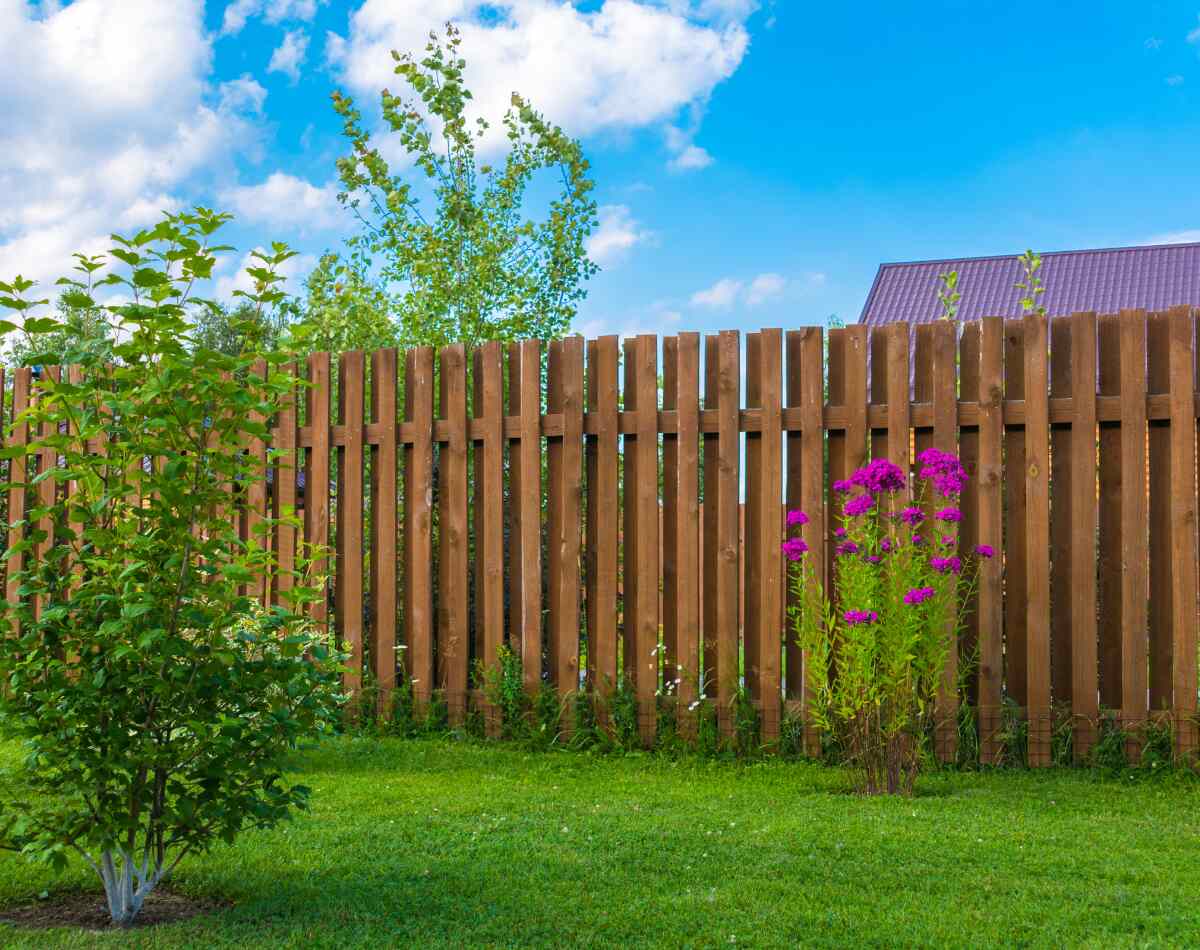All Categories
Featured
Installing a fence on your home can include personal privacy, protection, and visual allure, however prior to you start digging openings and establishing messages, it's important to recognize whether you require a license. Not getting the needed permits could result in penalties or the requirement to get rid of the fencing.
Why Are Permits Essential for Fence Installment? Authorizations are crucial for making certain that your fencing adheres to regional zoning laws and building ordinance. These policies aid guarantee the safety and security of your home and the bordering area. Furthermore, permits stop disagreements with next-door neighbors or regional authorities, particularly when it pertains to home lines, height constraints, and general style.
In many cases, neighborhood authorities need authorizations to regulate points like exposure at crossways or the closeness of a fence to public spaces like roadways or pathways. Licenses additionally aid ensure that fencings are set up correctly and securely, especially when it concerns one-of-a-kind products or high fences.
Typical Sorts Of Authorizations for Fence Installment. The kind of fence you desire to install and your area will certainly figure out which licenses are required. Below are the most usual types:
Structure Authorization. A building license is generally required for fencings that exceed particular height limits (usually over 6 feet), are situated near a public road or pathway, or are made from particular products. Building allows make sure that the framework satisfies neighborhood building regulations, consisting of safety requirements.
Zoning Permit. Zoning licenses are usually called for to make sure that your fence abides by regional zoning regulations. Zoning regulations can define where a fencing can be put on your building (e.g., along residential or commercial property lines or ahead yards), along with set limitations on fencing height. These laws are developed to stop obstructions that could impact website traffic safety or community looks.
![]()
Problem License. In some areas, you may require a problem authorization to position your fence a specific range from residential or commercial property roadways, lines, or energies. Setbacks are intended to keep proper area in between structures and residential or commercial property borders, decreasing possible conflicts with neighbors or public infrastructure.
Homeowners Organization (HOA) Authorization. You will likely require authorization from the HOA prior to mounting a fence if your property is component of a neighborhood regulated by a Homeowners Association (HOA) HOA standards usually govern the design, height, products, and also shade of fences, making certain that they match the total visual of the neighborhood.
The Refine for Obtaining a Fencing Permit. To obtain a fencing license, you normally need to contact your neighborhood city or county workplace. A lot of locations have a building department or planning workplace where you can request authorizations. The procedure entails completing an application and giving comprehensive info regarding your proposed fencing, including:
Fencing style (products, elevation, design) Place on the building. Residential or commercial property line information (for precise positioning) In a lot of cases, a site plan revealing the proposed fence's position will certainly be required. You might likewise require to pay an authorization fee, which can differ based on area and the complexity of the project.
Once you submit your application, the local authorities will certainly review it to make sure the fence adheres to regional guidelines. Depending upon your place, you might additionally require to allow or set up an assessment for a residential or commercial property survey.
When Do You Not Need a License? In some cases, a permit might not be required. Commonly, you could not require an authorization if:
![]()
The fence is under a particular elevation (often 3-4 feet for front lawns) You're replacing an existing fencing with the exact same kind and elevation. The fencing is short-lived (such as a garden fence) Nevertheless, it's always an excellent idea to get in touch with your neighborhood structure or zoning department to confirm the needs, as policies can vary.
Repercussions of Not Obtaining a Permit. In some instances, you might require to re-install the fence according to code, which might be expensive and time-consuming. Furthermore, not adhering to the appropriate permitting procedure can produce problems with neighbors, especially if your fence prolongs beyond your property line or doesn't meet elevation or layout requirements.
Final thought. Before installing a fencing, ensure you recognize the regional policies and whether you need an authorization. It is very important to check with your local structure or zoning workplace, as well as your HOA if applicable, to understand what's needed. By getting the right permits, you'll guarantee that your fence is lawfully compliant, risk-free, and devoid of future problems. Taking this extra step will certainly save you money and time over time while providing comfort that your task is on the ideal track.
Why Are Permits Essential for Fence Installment? Authorizations are crucial for making certain that your fencing adheres to regional zoning laws and building ordinance. These policies aid guarantee the safety and security of your home and the bordering area. Furthermore, permits stop disagreements with next-door neighbors or regional authorities, particularly when it pertains to home lines, height constraints, and general style.
In many cases, neighborhood authorities need authorizations to regulate points like exposure at crossways or the closeness of a fence to public spaces like roadways or pathways. Licenses additionally aid ensure that fencings are set up correctly and securely, especially when it concerns one-of-a-kind products or high fences.
Typical Sorts Of Authorizations for Fence Installment. The kind of fence you desire to install and your area will certainly figure out which licenses are required. Below are the most usual types:
Structure Authorization. A building license is generally required for fencings that exceed particular height limits (usually over 6 feet), are situated near a public road or pathway, or are made from particular products. Building allows make sure that the framework satisfies neighborhood building regulations, consisting of safety requirements.
Zoning Permit. Zoning licenses are usually called for to make sure that your fence abides by regional zoning regulations. Zoning regulations can define where a fencing can be put on your building (e.g., along residential or commercial property lines or ahead yards), along with set limitations on fencing height. These laws are developed to stop obstructions that could impact website traffic safety or community looks.

Problem License. In some areas, you may require a problem authorization to position your fence a specific range from residential or commercial property roadways, lines, or energies. Setbacks are intended to keep proper area in between structures and residential or commercial property borders, decreasing possible conflicts with neighbors or public infrastructure.
Homeowners Organization (HOA) Authorization. You will likely require authorization from the HOA prior to mounting a fence if your property is component of a neighborhood regulated by a Homeowners Association (HOA) HOA standards usually govern the design, height, products, and also shade of fences, making certain that they match the total visual of the neighborhood.
The Refine for Obtaining a Fencing Permit. To obtain a fencing license, you normally need to contact your neighborhood city or county workplace. A lot of locations have a building department or planning workplace where you can request authorizations. The procedure entails completing an application and giving comprehensive info regarding your proposed fencing, including:
Fencing style (products, elevation, design) Place on the building. Residential or commercial property line information (for precise positioning) In a lot of cases, a site plan revealing the proposed fence's position will certainly be required. You might likewise require to pay an authorization fee, which can differ based on area and the complexity of the project.
Once you submit your application, the local authorities will certainly review it to make sure the fence adheres to regional guidelines. Depending upon your place, you might additionally require to allow or set up an assessment for a residential or commercial property survey.
When Do You Not Need a License? In some cases, a permit might not be required. Commonly, you could not require an authorization if:

The fence is under a particular elevation (often 3-4 feet for front lawns) You're replacing an existing fencing with the exact same kind and elevation. The fencing is short-lived (such as a garden fence) Nevertheless, it's always an excellent idea to get in touch with your neighborhood structure or zoning department to confirm the needs, as policies can vary.
Repercussions of Not Obtaining a Permit. In some instances, you might require to re-install the fence according to code, which might be expensive and time-consuming. Furthermore, not adhering to the appropriate permitting procedure can produce problems with neighbors, especially if your fence prolongs beyond your property line or doesn't meet elevation or layout requirements.
Final thought. Before installing a fencing, ensure you recognize the regional policies and whether you need an authorization. It is very important to check with your local structure or zoning workplace, as well as your HOA if applicable, to understand what's needed. By getting the right permits, you'll guarantee that your fence is lawfully compliant, risk-free, and devoid of future problems. Taking this extra step will certainly save you money and time over time while providing comfort that your task is on the ideal track.
Latest Posts
Explore Limited-Time Auto Repair Deals in Chicago at Montclare Auto Repair
Published May 24, 25
1 min read
Recognizing When Your Car Needs Expert Auto Repair at Montclare Auto Repair
Published May 24, 25
1 min read
Specialist Industrial Roofing Solutions in North Platte, Nebraska
Published May 23, 25
2 min read
More
Latest Posts
Explore Limited-Time Auto Repair Deals in Chicago at Montclare Auto Repair
Published May 24, 25
1 min read
Recognizing When Your Car Needs Expert Auto Repair at Montclare Auto Repair
Published May 24, 25
1 min read
Specialist Industrial Roofing Solutions in North Platte, Nebraska
Published May 23, 25
2 min read